 |
 |
 |
http://www.varalaaru.com A Monthly Web Magazine for South Asian History [187 Issues] [1839 Articles] |
 |
 |
 |
http://www.varalaaru.com A Monthly Web Magazine for South Asian History [187 Issues] [1839 Articles] |
|
Issue No. 175
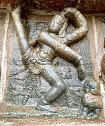
இதழ் 175 [ ஃபிப்ரவரி 2024 ] 
இந்த இதழில்.. In this Issue.. 
|
The Sankaracharya temple is on the summit of the Takht-i-Sulaiman hill, to the south-east Srinagar. The hill and the temple both do not preserve their ancient name. But the modern name of the hill seems to be of fairly long standing, as Catrou mentions it, and in a changed form (Koh-i-Sulaiman) by Abul Fazl. The temple stands on a high octagonal plinth, which people approach by climbing a long flight of steps. 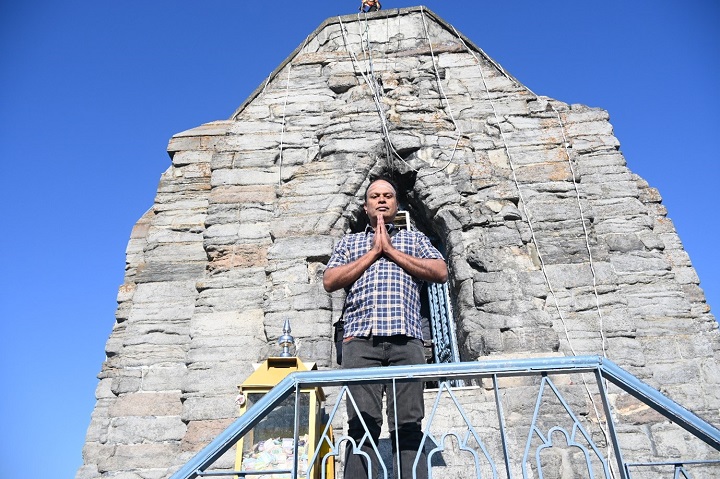 Two side-walls originally contained two Persian inscriptions enclosing these steps. One of these was dated A.H. 1069 =A.D. 1659. Both inscriptions disappeared in the last few decades. A low parapet wall 23' 6 surmounts the plinth" long on each side, the inner surface of which was originally adorned by a range of eighty-four round-headed recesses enclosed in rectangular panels. The greater part of the wall has now fallen. The shrine comprises a cell, circular inside, with a diameter of 13' 2". Externally, it is square, with two projecting facets on each side. 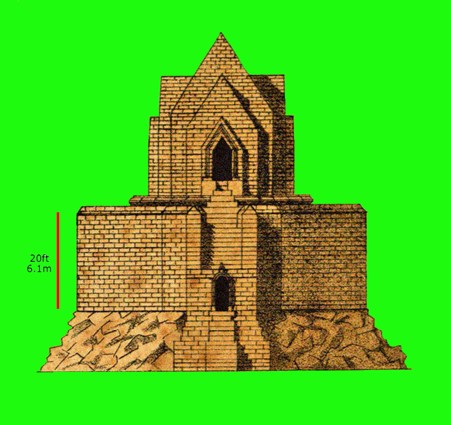 Apart from the salient and re-entering angles of the facets, the surface is plain. The maximum thickness of the walls in the middle of each facet is 8' 2". A modern ceiling covers the interior of the sanctum."composed of flat stone slabs and wooden boards, which rest on two lintels of the same material, themselves supported on four columns in the centre of the room. The mason named Bihishti carved the column and engraved the Persian inscription, stating that it is from the year 54. A.H. 1054, corresponding to C.E. 1644. The date falls during the reign of Shah Jahan. Hence, the builders constructed the ceiling with its columns during the reign of that king. The original ceiling, which this modern addition has hidden from view, is dome-shaped and built of horizontal courses of kanait or kanjur (a kind of light and porous limestone). 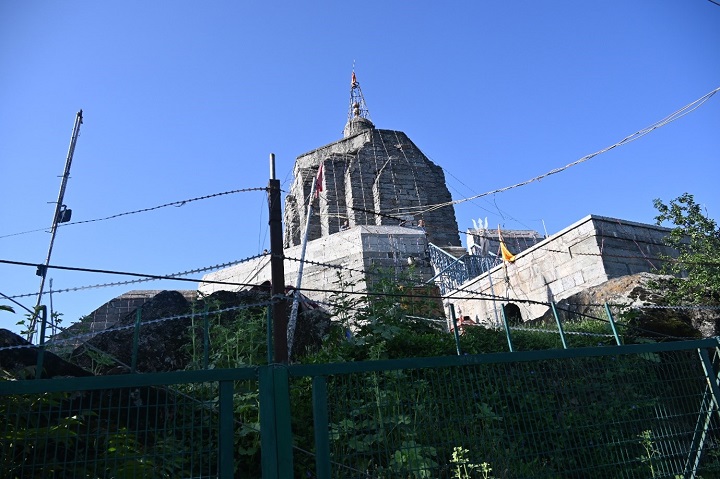 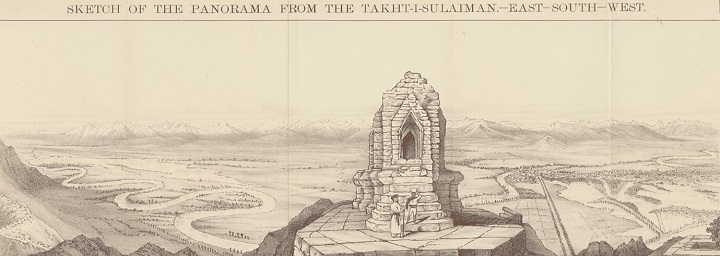 The absence of the trefoil entrance to the sanctum, and similar niches on the other three sides, is remarkable. In this respect, as in the circular interior plan, this temple is like the larger temple at Loduv. 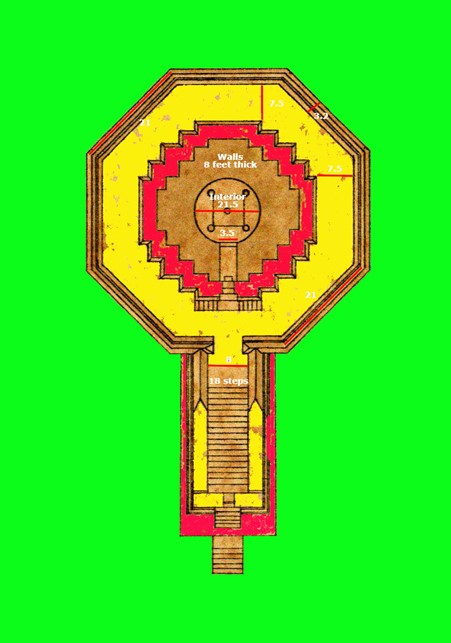 The construction of the brick roof appears to have taken place within the last century.The date of this temple has been a source of controversy among archaeologists. General Cunningham and, after him, Lieut. Cole assigned it to the times of Jalauka (whom they date 220 B.C.) on the strength of local tradition. Archaeologists have rejected this theory, firstly based on architectural grounds, and secondly due to the doubtful character of the tradition. 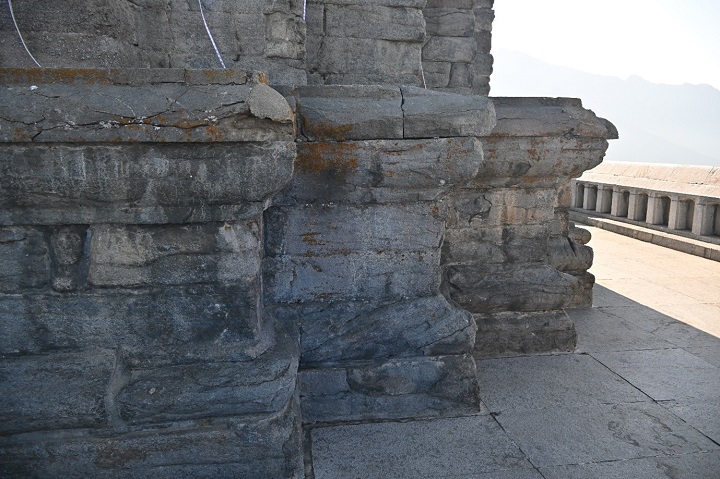 Fergusson advanced another theory that the temple was built in the reign of Jahangir. According to him, "some nameless Hindus began the temple as it now stands to honor Siva during the tolerant reign of Jahangir." It was then unfinished, and has consequently remained a ruin ever since, which may give it an ancient look.'' But Fergusson's conclusion was based on arguments which appear to have little foundation. According to Jesuit Catrou's History of the Mughal Empire, published in 1708 A.D., it is believed that the Kashmiris have Jewish ancestry. " Moses is a very common name there; and some Ancient Monuments still to be seen discover them to be a People come out of Israel. For instance, the ruins of an Edifice built on a high mountain are called at this Day the Throne of Solomon." Again, Bernier, who accompanied Aurangzeb to Kashmir in 1665, writes of the existence of an "extremely ancient building, which bears evident marks of having been a temple for idols, although named Tact-Souliman, the Throne of Solomon.These statements show that by the beginning of Aurangzeb's reign, the origin and authorship of the temple had been lost in the mists of antiquity. 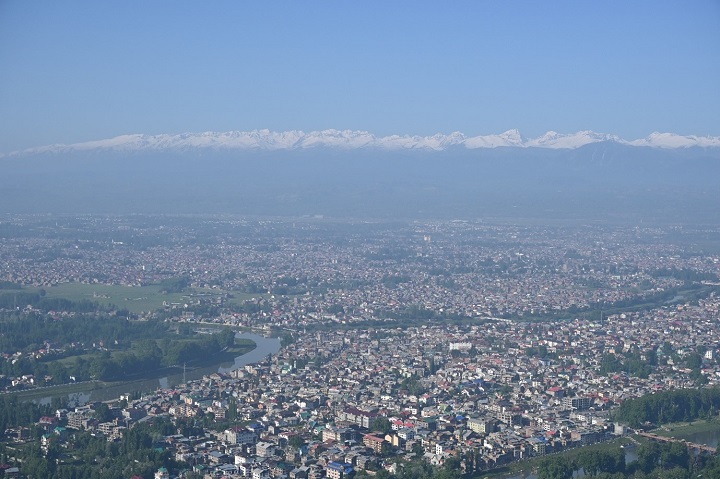 (A beautiful view from the temple premises) They prove the temple had already fallen into disuse and ruin. It appears, however, probable that that shrine occupied the same position. Gopadityais date, and consequently that of his buildings, is uncertain. But the conjecture that the present temple must be at least a century earlier than that highly finished example of Kashmir architecture, the Martand temple, seems plausible. To the north of the base is a low cell 10' 8" square, entered through a plain and nearly circular-headed low doorway. The ceiling is flat and built of plain stone slabs placed on long stone joists, which rest on remarkably long beams supported on two octagonal columns. To the south-east of the temple base, slightly lower down the hill, is a tank 10' 1" square. 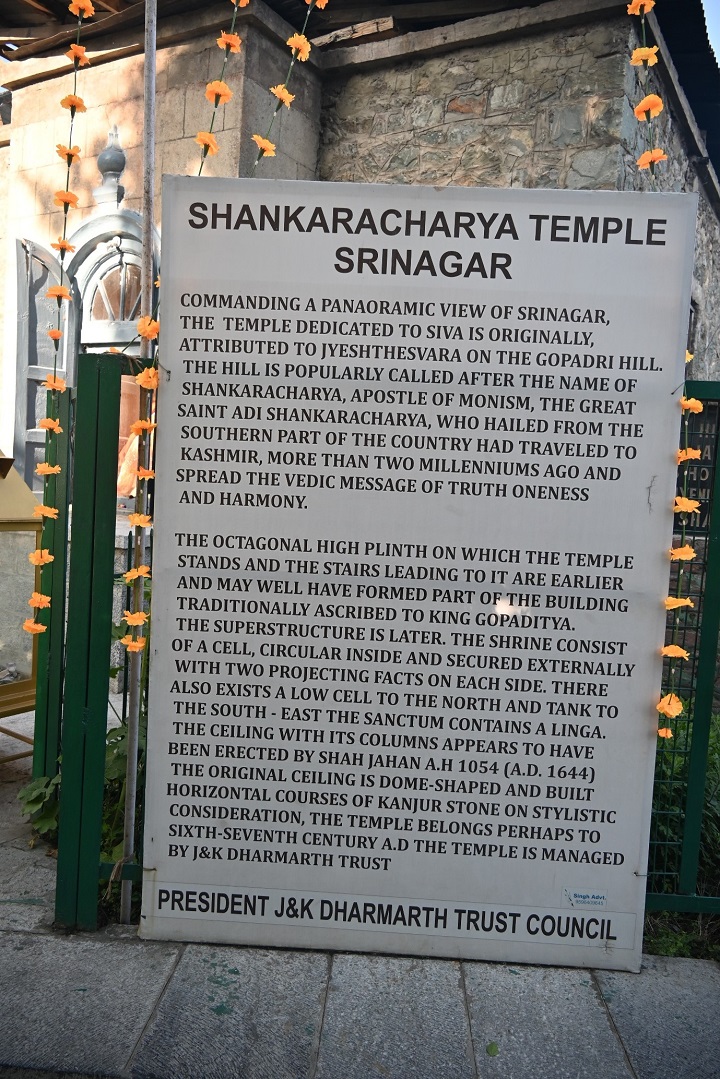 In the area in front of the temple are the ruins of two Muslim structures, probably the remains of the small mosque and garden mentioned by Bernier, and belonging perhaps to the reign of Shah Jahan, when the Persian and Arabic inscriptions in the temple were put up. The temple of Sankaracharya commands one of the finest views in the whole of Kashmir. The view of the city with its green, turfed roofs, covered in the spring with iris, tulip, and a variety of other flowers, is without a doubt unique. |

சிறப்பிதழ்கள் Special Issues 

புகைப்படத் தொகுப்பு Photo Gallery 
|
| (C) 2004, varalaaru.com. All articles are copyrighted to respective authors. Unauthorized reproduction of any article, image or audio/video contents published here, without the prior approval of the authors or varalaaru.com are strictly prohibited. | ||